
The Prince of Egypt
Movie Review
Preliminary Notes
The DreamWorks presentation The Prince of Egypt opened at theaters on December 18, 1998. I meant to get a preliminary review out before the movie was showing in theaters. However, I'm glad I waited to write this review until after I had seen the movie. The first information I read on the movie was very favorable. The Focus on the Family Review was very positive, as was A Christian Spotlight on the Movies' Review. However, I was a little disappointed after reading the storybooks that were available before the movie was released. There were two: the one that comes with The Prince of Egypt Movie Ticket Exclusive Gift Package (which can be purchased at Sam's or Wal-Mart) and another entitled The Prince of Egypt, as told by Jane Yolen. The storybooks took some liberties from both the Biblical account and the DreamWorks account and were not quiet as good as the movie.
A General Review
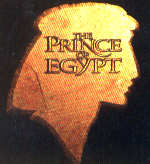 The first thing I had to do while watching the movie was realize it was a cartoon, and cartoons aren't by the nature of their genre meant to be completely accurate and historical. That's hard for such a historical and detail minded person as me. However, I was impressed by their attempt. It was very effective - a cartoon that was entertaining as cartoons and musicals are meant to be, and rather realistic and historical (i.e., no talking animals, completely impossible events, etc.). It definitely sets a milestone in this arena for a new generation of cartoons. So, when viewing the movie from the standpoint of its genre, I'll have to give it an excellent rating. The story was good, the soundtrack was good, the actors were good (even if they were in roles you wouldn't expect to see them in), and the quality of the film was good.
The first thing I had to do while watching the movie was realize it was a cartoon, and cartoons aren't by the nature of their genre meant to be completely accurate and historical. That's hard for such a historical and detail minded person as me. However, I was impressed by their attempt. It was very effective - a cartoon that was entertaining as cartoons and musicals are meant to be, and rather realistic and historical (i.e., no talking animals, completely impossible events, etc.). It definitely sets a milestone in this arena for a new generation of cartoons. So, when viewing the movie from the standpoint of its genre, I'll have to give it an excellent rating. The story was good, the soundtrack was good, the actors were good (even if they were in roles you wouldn't expect to see them in), and the quality of the film was good.
Unfortunately, some other reviewers have over-emphasized the accuracy and realism of The Prince of Egypt. They did break a few traditions of Biblical movies and shows that are admirable - for instance, the stars are not white, blonde, and blue-eyed, but look Middle Eastern (i.e., Egyptian and Hebrew). You also felt like you were in Egypt for the most part and they captured the enormous size of the Egyptian monuments and the grandness of ancient Egypt. It seems obvious that Egyptologists and Syro-Palestinian archaeologists were at least consulted for this film. However, the story did deviate from the Biblical account at times, less so than many Biblical movies and cartoons, but it did deviate. None-the-less, DreamWorks accomplished its mission (as stated at the beginning of the movie) to capture the essence of the story, even if some of the details were changed. What was changed to keep the movie short and flowing was done tactfully. There was nothing objectionable to Christians. This is in part due to their decision to consult with Christian leaders (such as Billy Graham, James Dobson, and Pat Robertson) while making the movie.
Notes and Comments from the Movie
 One of the first changes from the Biblical account is that Moses was drawn from the water by Seti's wife, not the daughter of pharaoh. Actually, this might not be as far off as some believe. It was not uncommon for pharaohs to marry their half-sisters. Remember, the pharaoh was considered divine, and it was not a good idea to pollute that divine bloodline by marriage to common folk.
One of the first changes from the Biblical account is that Moses was drawn from the water by Seti's wife, not the daughter of pharaoh. Actually, this might not be as far off as some believe. It was not uncommon for pharaohs to marry their half-sisters. Remember, the pharaoh was considered divine, and it was not a good idea to pollute that divine bloodline by marriage to common folk.
There is another difference from the Biblical account in the beginning. In the movie, Moses' real mother doesn't nurse Moses for the pharaoh's daughter. In fact, Miriam leaves without approaching pharaoh's daughter about this.
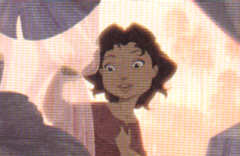 Speaking of Miriam, I did find the portrayal of Miriam as interesting and I liked the way DreamWorks portrayed her. She prophesies from the beginning that Moses was to be their deliverer. Except for one time in the Biblical account, Miriam is very supportive of Moses. That one account when Miriam speaks out against Moses, it is implied that she might have been seen as a prophet (see Numbers 12).
Speaking of Miriam, I did find the portrayal of Miriam as interesting and I liked the way DreamWorks portrayed her. She prophesies from the beginning that Moses was to be their deliverer. Except for one time in the Biblical account, Miriam is very supportive of Moses. That one account when Miriam speaks out against Moses, it is implied that she might have been seen as a prophet (see Numbers 12).
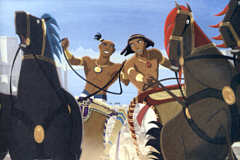 When reading the book, I wasn't too fond of the chariot race. I couldn't picture the sons of pharaoh being so reckless - they were divine (according to the Egyptians) and to appear as if they were above our world (i.e., a bit aloof). But Seti, Rameses' father responded as he would have if that had occurred - very, very upset! Besides, the chariot race is one of those elements of this genre of film that makes it entertaining. Of particular comical note, is the explanation for the nose having fallen off the sphinx. This isn't likely, and if I'm not mistaken that sphinx was built much earlier. None-the-less, it was funny!
When reading the book, I wasn't too fond of the chariot race. I couldn't picture the sons of pharaoh being so reckless - they were divine (according to the Egyptians) and to appear as if they were above our world (i.e., a bit aloof). But Seti, Rameses' father responded as he would have if that had occurred - very, very upset! Besides, the chariot race is one of those elements of this genre of film that makes it entertaining. Of particular comical note, is the explanation for the nose having fallen off the sphinx. This isn't likely, and if I'm not mistaken that sphinx was built much earlier. None-the-less, it was funny!
I also enjoyed the contrast in the way Egypt was shown before and after Moses come to realize he was Hebrew. Before he found out, you hardly noticed the Hebrew slaves - you saw the grandeur of Egypt. After he came to that realization, almost all you noticed was the slaves. Perspective is a powerful thing!
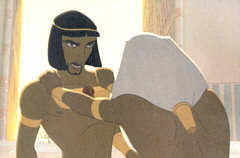 The movie also portrays a different account of Moses' murder of the Egyptian taskmaster. In the Biblical account, this is premeditated, not accidental - Moses looks around first to see if anyone is around. Of course, the Biblical account has always risen the question: Why would Egyptians care that the son of pharaoh had murdered an Egyptian taskmaster? They might care, but it seems unlikely that pharaoh would want to kill his son for that. This makes me wonder if it was well-known that Moses was Hebrew, not Egyptian. If this were the case, that murder could be seen as rebellion. But, that wouldn't make a good "Hollywood" Story! So, Dreamworks decides that Egypt doesn't care about Moses' murder of the taskmaster, but Moses does!
The movie also portrays a different account of Moses' murder of the Egyptian taskmaster. In the Biblical account, this is premeditated, not accidental - Moses looks around first to see if anyone is around. Of course, the Biblical account has always risen the question: Why would Egyptians care that the son of pharaoh had murdered an Egyptian taskmaster? They might care, but it seems unlikely that pharaoh would want to kill his son for that. This makes me wonder if it was well-known that Moses was Hebrew, not Egyptian. If this were the case, that murder could be seen as rebellion. But, that wouldn't make a good "Hollywood" Story! So, Dreamworks decides that Egypt doesn't care about Moses' murder of the taskmaster, but Moses does!
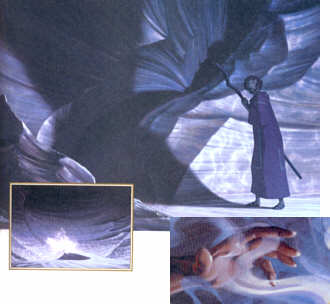
The miracles were also handled very well in The Prince of Egypt. Other movie makers should take note. The burning bush scene was particularly well done even though it was abbreviated slightly from the Biblical account. It was far, far better than the scene in Cecil B. DeMille's Moses and the Ten Commandments. It also was a much more significant part of the The Prince of Egypt than it was in Moses and the Ten Commandments. When I first read a review noting this, I said how good can the special effects of a cartoon be. But, when I saw the movie, I had to agree. You almost felt like you were in there in the presence of God; it was still and peaceful. However, in that same scene, Moses' arguments with the Lord is glossed over in the movie. This brings up one of the more frustrating differences between the movie and the Biblical account. Aaron is not Moses' spokesperson in the movie. In fact, he isn't too supportive of Moses through most of the movie.
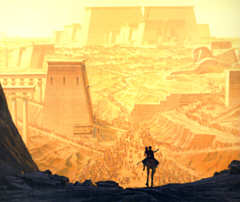 Worth noting is the fact that according to the Bible, Moses was 83 when he went to the pharaoh to demand that he let God's people go. No Hollywood account that I'm aware of has shown Moses to be up there in years when this occurred! There is just such an infatuation with youth in our culture! Oh, well, maybe Hollywood will get that one a bit closer to right someday...
Worth noting is the fact that according to the Bible, Moses was 83 when he went to the pharaoh to demand that he let God's people go. No Hollywood account that I'm aware of has shown Moses to be up there in years when this occurred! There is just such an infatuation with youth in our culture! Oh, well, maybe Hollywood will get that one a bit closer to right someday...
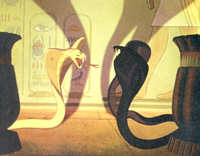 Moses' confrontation with the Egyptian priests was a bit far-fetched, but entertaining and did make a good point. The point was that Moses' miracles (actually the Lord's) were real, the Egyptians were fanciful tricks and illusions. This scene is far fetched because the Egyptians probably didn't do a rather modern looking lights and magic show. This is entertaining, but highly unlikely. Once again, I had to remind myself this is a cartoon and cartoons are meant to be a bit funny. I also liked how the snake battle (where Moses' snake eats the Egyptian snakes) was shown as an aside to the show going on. Most likely, the Egyptians didn't recognize the miracles as miracles because their focus was elsewhere. Often today, we miss what the Lord does in our midst because our eyes are looking elsewhere.
Moses' confrontation with the Egyptian priests was a bit far-fetched, but entertaining and did make a good point. The point was that Moses' miracles (actually the Lord's) were real, the Egyptians were fanciful tricks and illusions. This scene is far fetched because the Egyptians probably didn't do a rather modern looking lights and magic show. This is entertaining, but highly unlikely. Once again, I had to remind myself this is a cartoon and cartoons are meant to be a bit funny. I also liked how the snake battle (where Moses' snake eats the Egyptian snakes) was shown as an aside to the show going on. Most likely, the Egyptians didn't recognize the miracles as miracles because their focus was elsewhere. Often today, we miss what the Lord does in our midst because our eyes are looking elsewhere.
 The movie also abbreviates the plagues considerably. This takes up 5 chapters in the Bible. In contrast, the Biblical account of Moses life in Egypt as a prince takes up less than 1 chapter. But, perhaps I'm getting nitpicky now. Of course, the abbreviating of the plagues is a common trend in Biblical storybooks and cartoons for kids. "Scary" things are removed often to point of destroying or badly changing the Biblical event. From this perspective, DreamWorks came a long ways, but I'd rather see them go further. I also have to note that I did like the nice little touch they did on turning the Red Sea into blood, but having the water remain clear around Moses.
The movie also abbreviates the plagues considerably. This takes up 5 chapters in the Bible. In contrast, the Biblical account of Moses life in Egypt as a prince takes up less than 1 chapter. But, perhaps I'm getting nitpicky now. Of course, the abbreviating of the plagues is a common trend in Biblical storybooks and cartoons for kids. "Scary" things are removed often to point of destroying or badly changing the Biblical event. From this perspective, DreamWorks came a long ways, but I'd rather see them go further. I also have to note that I did like the nice little touch they did on turning the Red Sea into blood, but having the water remain clear around Moses.
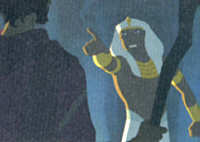 I particularly like the portrayal of Rameses in this movie. It is important to note from an archaeological viewpoint, Rameses was a very good king from a worldly perspective. He was one we'd admire - a great builder and military leader and probably well liked by his people. The theme in the movie about "one weak link" (that can destroy a dynasty) is also good worldly wisdom. But, worldly wisdom doesn't cut it in God's world. Note: some might object to the choice of Rameses as the pharaoh of the Exodus. Some feel the pharaoh was Thutmoses (who ruled several hundred years earlier). However, in this caricature both are similar - they were both very effective and good kings.
I particularly like the portrayal of Rameses in this movie. It is important to note from an archaeological viewpoint, Rameses was a very good king from a worldly perspective. He was one we'd admire - a great builder and military leader and probably well liked by his people. The theme in the movie about "one weak link" (that can destroy a dynasty) is also good worldly wisdom. But, worldly wisdom doesn't cut it in God's world. Note: some might object to the choice of Rameses as the pharaoh of the Exodus. Some feel the pharaoh was Thutmoses (who ruled several hundred years earlier). However, in this caricature both are similar - they were both very effective and good kings.
Summary and Concluding Remarks
Probably my biggest complaint is in the basic theme - and, this isn't a big complaint. The main theme in the movie is a story of freedom. That is part of the Biblical account, but it is more than just freedom. The Israelites were a chosen people, a people to be set apart for God's work. This could be recaptured if DreamWorks chose to do a Part 2 to The Prince of Egypt!
I must also note that I was surprised to see some very Christian overtones in this movie. For example, the slaying of the Hebrew children is portrayed very similar to Herod's slaying of the infants. Moses also leaves the 99 sheep to go after the one lost sheep just before he encounters the Burning Bush. To keep a Jewish audience, Christian overtones are usually avoided. That there were Christian overtones is even more surprising since Steven Speilberg (one of the owners of DreamWorks) is Jewish!
So, I have to conclude by saying: Dreamworks did good on this movie. Not that I really care much for DreamWorks' other works. And, I do want to lament the choice of trailers shown before this movie, especially the DreamWorks trailers - they weren't uplifting movies to say the least! But back to the movie itself. I recommend The Prince of Egypt. There are some changes from the Biblical account, but the movie has captured the essence of the story as they aspired to. As other Christian Reviewers have said, they got this one right (at least for the most part).
If you have any other comments or would like me to report here on another aspect of the movie, please e-mail me, Digger Doyle.
Note: the images on this page are from the movie and the copyright is owned by DreamWorks and are shown here for review purposes only.
Sources for More Information
If you would like to see the movie trailers:
Quicktime Trailer (20.5 MB). I think this is the first trailer shown in the theaters last year.
AVI Trailer (6.4 MB).
The official DreamWorks web site for Prince of Egypt is also a good place to get more information on the movie!
Another excellent reference is Threads in a Tapestry. This site explains the sources for many of the films additions to the Biblical material (Dreamworks didn't just make up a lot of their additions).
Go back to the main Media Reviews page.


